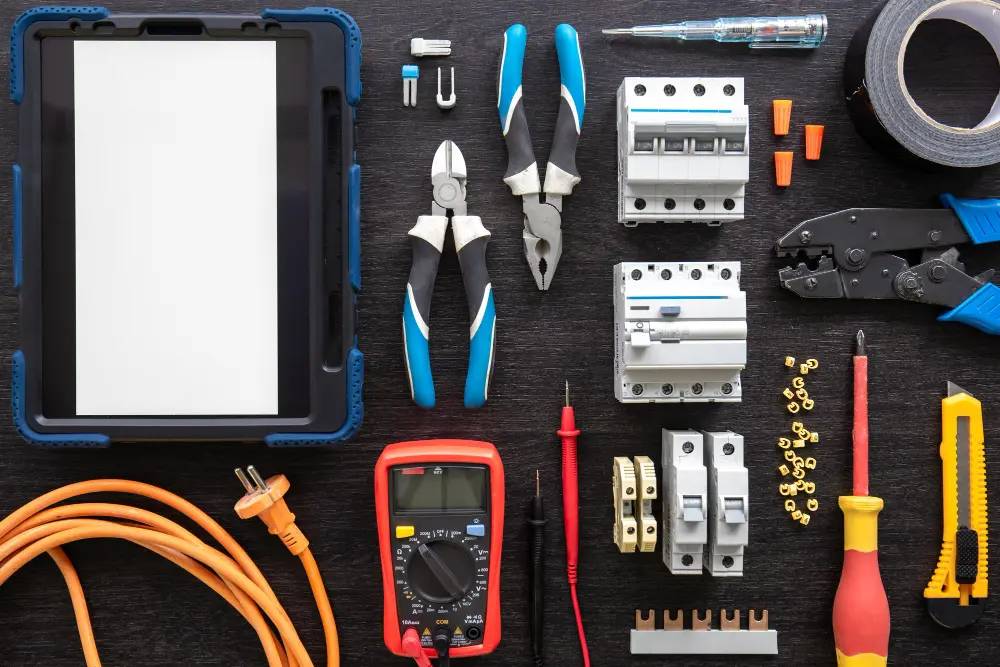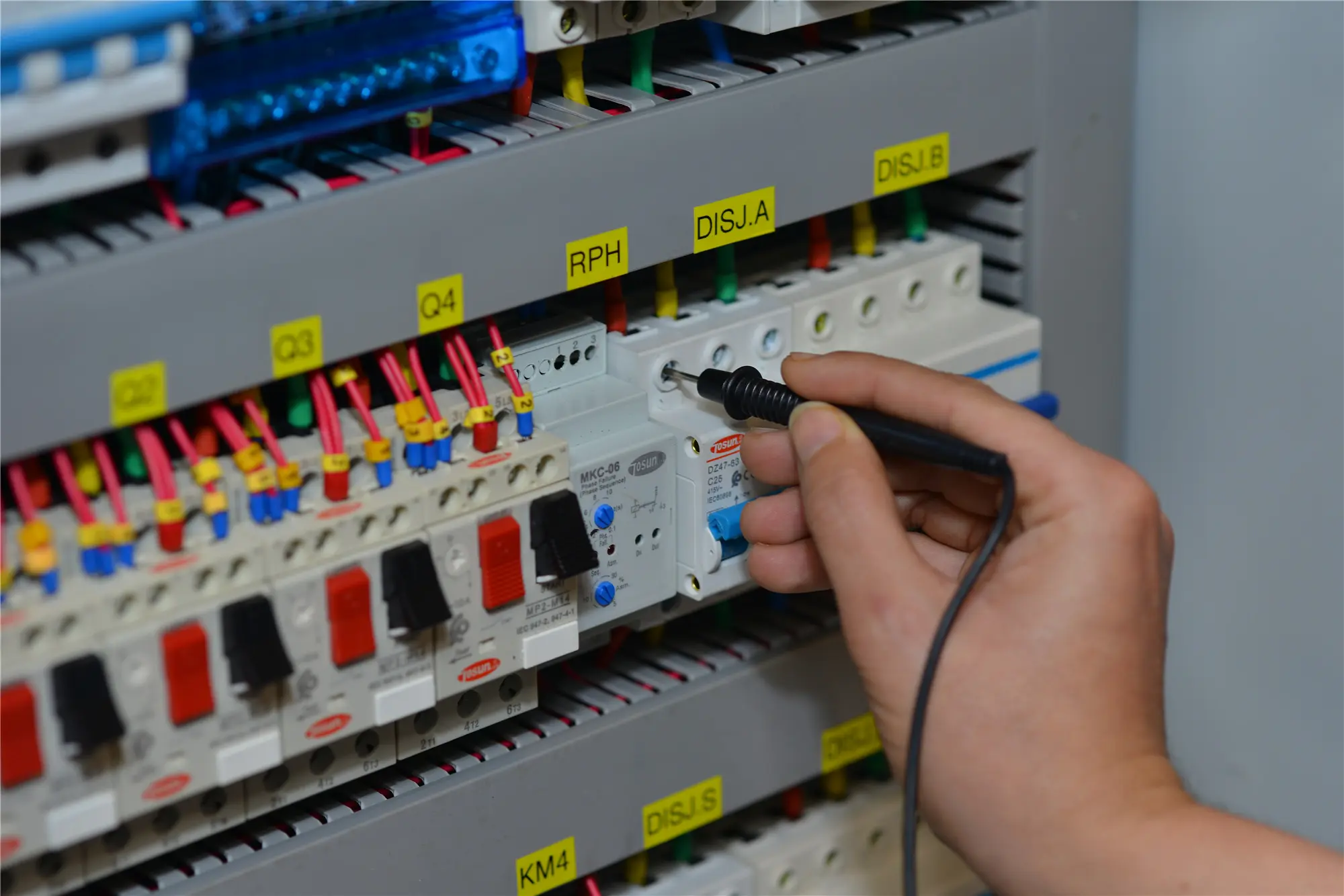What type of circuit breaker panel is there?
Table of Contents
ToggleYour home’s electrical system is built around an electrical panel. While all you need to know about an electrical service panel is that it distributes power to your home, there are numerous types of electrical service panels to be aware of.
The majority of residential homes rely on their local utility company for electricity. The electrical panel, which serves as the main switchboard for distributing energy within each residence, receives power from the utility company. It can include lights, appliances, and other equipment utilized by family members.
The main breaker panel is the mother of all your house’s panels. It controls the circuit breakers and the amount of electricity used in the residence. Fuse boxes are made up of miniature fuses that are used to protect your circuits from being overloaded. Line wires feed into lugs in main lug panels, which eliminates the requirement for the main breakers. Subpanels are electrical panels that receive power from a leading panel via a specific circuit. They let you manage the amount of electricity used by members of your family.
Can you tell me what kinds of electrical panels you have in your house? Have you ever wondered when your electrical panel should be replaced? Electrical panels should be updated every 20 years on average. Old electrical panels, such as the fuse box, must be replaced with new ones to handle your current electrical usage. Suppose you notice flickering lights, a burnt odor coming from an electrical panel, regular circuit breaker trips, or a significant increase in the number of electric appliances and devices in your home. In that case, you should have your electrical panels inspected and repaired if necessary.
Types of Electrical Panels:
Many factors come into play, including the size of your home, your consumption, and your electricity requirements.
1. Main Electrical Panel: The main breaker panel is used to regulate the flow of electricity throughout your home. It is the most popular sort of panel. It not only distributes current to various regions and rooms across your home, but it also safeguards the circuits and determines the amperage capacity.
2. Main Lug Panel: The main lug panel is similar to the one above, but it does not include a main breaker. These panels are occasionally used as sub-panels. With this sort of panel, the line wires are connected to a lug, an electrical connector.

3. Sub-panels: Sub-panels are ideal if you need many circuits in the same region of the house. These mini electrical panels hold circuit breakers distinct from the main panel and service a specific room or area. They use a circuit to acquire electricity from the main electrical panel.
4. Transfer Switches: As the name implies, transfer switches convert generator power to electrical power. They’re a form of sub-panel commonly employed in locations where storms or other unpredictably bad weather are regular. In these places, many households have backup power generators.
Transfer switches are also divided into two categories:
Both manual and automatic options are available.
5. Capacity: Capacity is another technique to categorize electrical panels. Small amperage electrical panels, such as 60-Amps or 80-Amps, are still found in many older homes. In many cases, they aren’t up to code, and they can’t handle the electrical demands of today’s homes. These are the following:
Electrical panels of 100, 125, or 150 amps
Panels with 200 amps
Panels with 400 amps
6. Security: While amperage is crucial when categorizing electrical panels and upgrading, the panel’s performance and safety are even more significant. Houses built before 1990 may still contain antiquated and potentially dangerous electrical panels. When researching the various categories or groups, you should have a good idea of which electrical panels are the best and the worst.
What is the best way to install a 200 amp breaker box?
Suppose you need to upgrade to a 200-amp breaker box. In that case, you’ll need a work permit from your local building inspector, as well as a temporary service interruption from your utility provider on the day of installation so that you can finish the job. Because it’s a complicated and dangerous job, we strongly advise you to engage a professional electrician to complete it. We at Arc Angel can install your 200-amp breaker box, handle all of the permits, and conduct the necessary safety inspections.
If you’re installing a Square D 200-amp breaker panel, the procedure should be the same as any other 200-amp panel. The only distinction is that, due to the back feed design, the cables are connected through the back of the panel. Again, we advise you to leave this to the professionals. Arc Angel Electric’s professional electricians can assist you with any electrical project.
A 200-amp service will allow you to be more flexible with your electrical usage. To comply with the new rules and meet your increased electrical demand, you can convert your 100-amp panel to a 200-amp panel. If you know what you’re doing with electricity, you can modify your electrical panel. To ensure the quality and safety of the work, it is advisable to entrust it to the electrical professionals at Arc Angel Electric.
What distinguishes a 100-amp service from a 200-amp service?
For a small home without electric heating, a 100-amp service is usually sufficient. For newly constructed homes, a 200-amp service is a current requirement to meet all of the electrical needs of modern equipment. Because it houses more circuit breakers, the 200-amp breaker is physically more significant than the 100-amp breaker.
What is the purpose of an electrical panel?
The electricity from your utility provider is delivered to the electrical panel. The main breaker panel controls the power in all of the house’s branch circuits. To power your electrical equipment, the electrical current runs through hot wires in your circuit breakers.
Conclusion:
The correct electrical improvement may increase the value and appearance of any home or company significantly. You’ll be surprised at how much an excellent electrical improvement may improve your home or business. Make sure that when you hire an electrical company to improve your home and you decide to go to the point where you need an electrical update, the firm’s expert has enough experience and knowledge to assist you in this area appropriately.
Tel: +86-577-88671000
E-mail: ceo@tosun.com
Skype: tosunelectric
Wechat: +86-139 6881 9286
WhatsApp: +86-139 0587 7291
Address: Room No.1001 Wenzhou Fortune Center,Station Road, Wenzhou, China
REQUEST A QUOTE
WhatsApp us
 : +86-139 0587 7291
: +86-139 0587 7291 English
English Español
Español Русский
Русский Français
Français العربية
العربية Português do Brasil
Português do Brasil Українська
Українська Türkçe
Türkçe Polski
Polski Nederlands
Nederlands Italiano
Italiano Bahasa Indonesia
Bahasa Indonesia हिन्दी
हिन्दी اردو
اردو አማርኛ
አማርኛ Հայերեն
Հայերեն ไทย
ไทย Монгол
Монгол فارسی
فارسی Shqip
Shqip Ελληνικά
Ελληνικά



